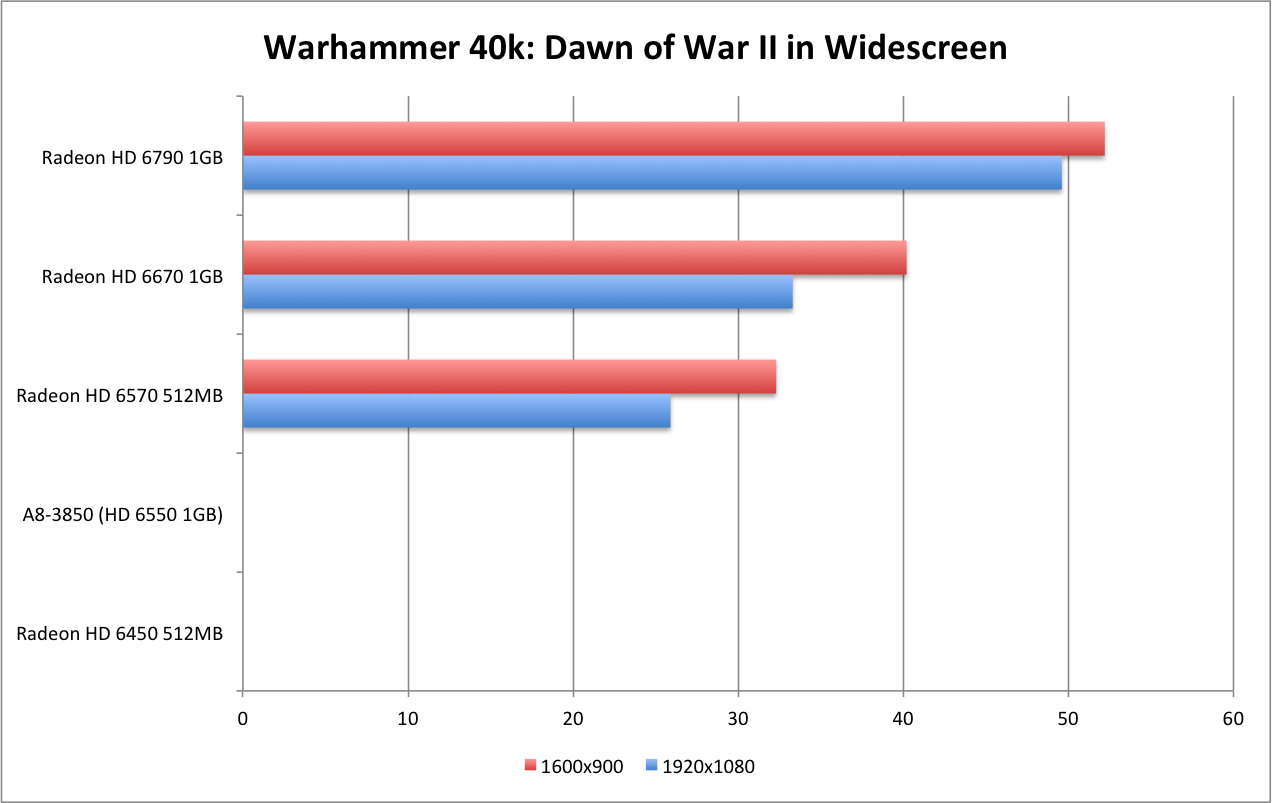AMD Fusion A8-3850 Platform Review - Benchmarking
With our standard set of benchmarks, we look to compare different GPU options at "max settings". At face value, the isn't the marktet for the the A8-3850. Even considering this outlook, we have run the A8-3850 in position to the current AMD discrete GPU platforms.
Our goal is to provide you with a comparison of the current APU platform to the discrete offerings and build a framework for comparing future APU releases. Witht that in mind, I've run tests to compare to the E-350.
Additionally, I've loaded an AMD Radoen HD 6970 into the A8-3850 to see how it compares to our current platform, the Intel i7-920. Below are some slides from a recent AMD presentation that outline the A8 APU architecture, and how they see it fitting in with the competition. These are a good point of reference as you go through the following pages.
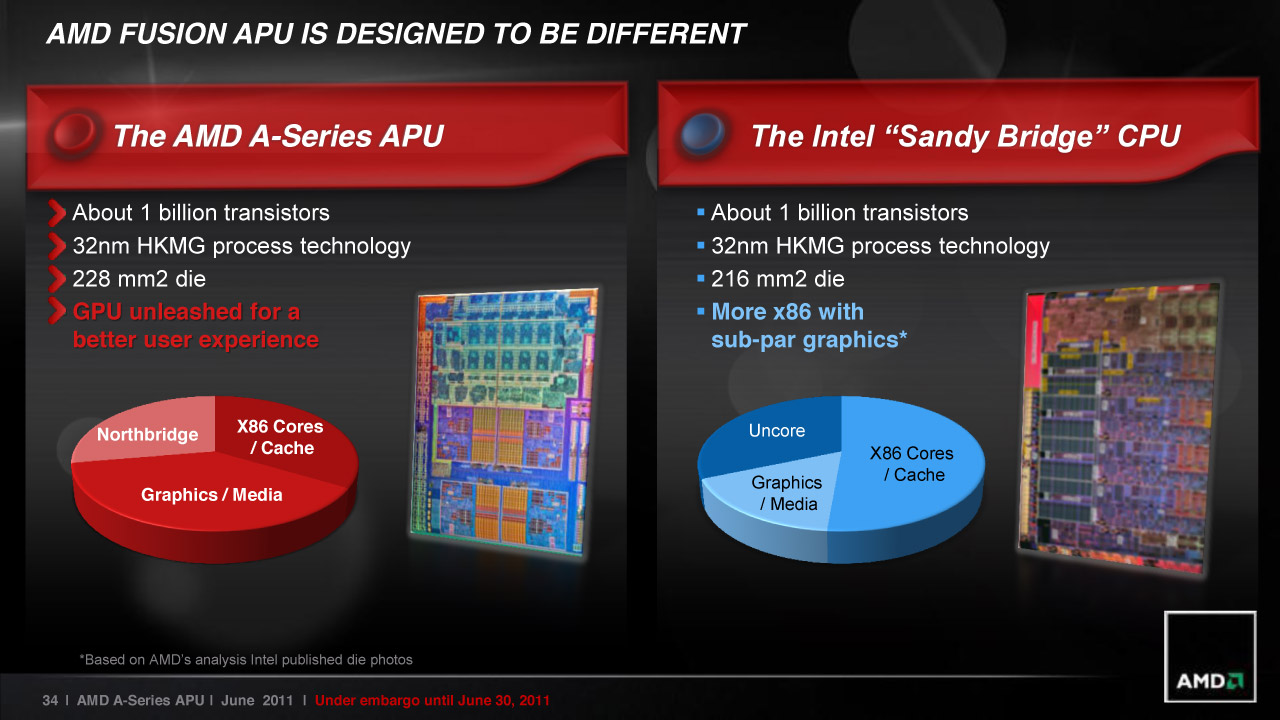
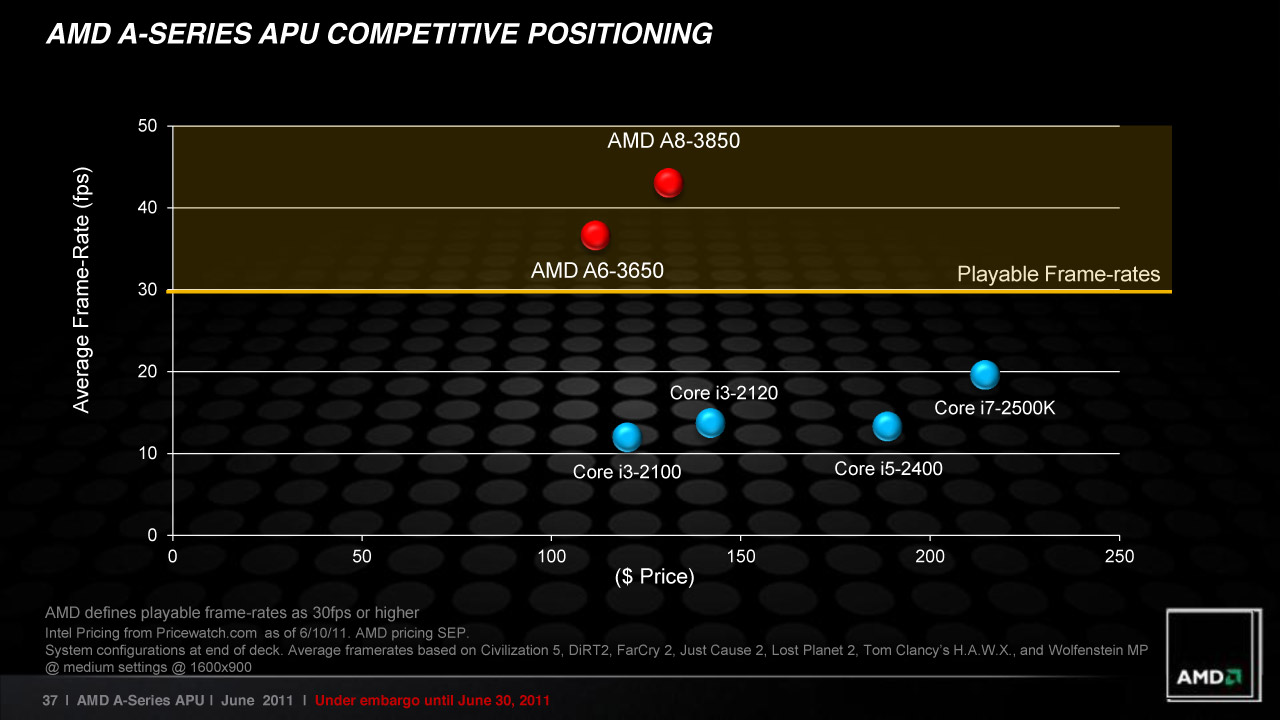
System Specs
Tests were done with the 11.10 Driver, on my existing test bed. The A8-3850 was tested with 8GB of RAM (with 1GB allocated to the GPU). The E-350 had 4GB of RAM (with 1GB allocated to the GPU).
- Windows 7 SP-1
- EVGA X58 Tri-SLI Motherboard
- Intel i7 920 at 4x2.67GHz
- 12GB G.Skill DDR3 RAM
- 2x Samsung 320GB T-Series HDD (one for the OS and games; one for swap file and FRAPS)
- LG Super Multi Blu (HD-DVD/Blu-Ray Player)
- Onboard audio
- Corsair HX1000
- My Open PC Doma Pro PCI Case
- Logitch K340 Keyboard & Performance MX Mouse
- Ergotech Heavy Duty Triple Desk Stand
- Dell U2211H IPS 16:9 1920x1080 Display
Hardware Tested
I only have AMD hardware tested for comparison in this review. This is not for lack of wanting to test NVIDIA hardware in Surround, but NVIDIA has not yet decided to support the WSGF with hardware for review and benchmarking. Considering that the WSGF is a hobby that just supports itself, I cannot justify spending the money needed to test NVIDIA cards.
Most of my time is spent working on the site (or other projects), and much of my "play time" is spent benchmarking. Cards would basically only be used for testing, and I cannot reconcile purchasing cards that would only be used for testing. It's simply not a good ROI.
Resolutions Tested
I tested both 1600x900 and 1920x1080 in widescreen.
Games Tested
I've taken this opportunity to work in new games to my game selection. New games since the HD 6990 benchmarks are noted with an asterisk.
- Aliens vs. Predators
- Battle Forge
- DiRT 2
- DiRT 3*
- F1 2010
- Far Cry 2
- HAWX (only at 2xAA)
- HAWX 2*
- Heaven 2 (DX9, DX10 & DX11)
- Just Cause 2
- Mafia II
- Metro 2033*
- S.T.A.L.K.E.R. - Call of Pripyat Benchmark Tool
- Total War: Shogun 2*
- Warhammer 40k: Dawn of War II*
As always, all games are tested at max settings (unless otherwise noted), with 4xAA and 16xAF enabled. We tested some of these titles as part of our review of the Mainstream 5000-series cards. Where available, we include these numbers as well.
I have simplified the graphs to only include cards of similar performance. It really doesn't do any good to see the massive performance increase in a Radeon HD 6990 as it's not comparable to any of the Mainstream cards we are testing here.
Simplifying the graphs made them much more readable and user friendly.
Future Testing
I am have just finished an FX Bulldozer build, which will allow me another CPU vs. CPU comparison.
AMD Fusion A8-3850 Platform Review - Aliens vs. Predator, Battle Forge, DiRT 2 & DiRT 3
Aliens vs. Predator
Aliens vs. Predator (AvP) is an FPS title from Rebellion Studios. It allows players to take on the role of either an Alien, a Predator or a human space marine. While the title received mixed reviews, it is a DX11 graphics powerhouse that can bring many machines to their knees.
The demo follows a number of Alien creatures, and makes extensive use of shaders and tessellation. The mainstream Fusion APU stand up to the AvP demo, and honestly I don't expect it to. It is a difficult demo that is made to stress even high-end cards.
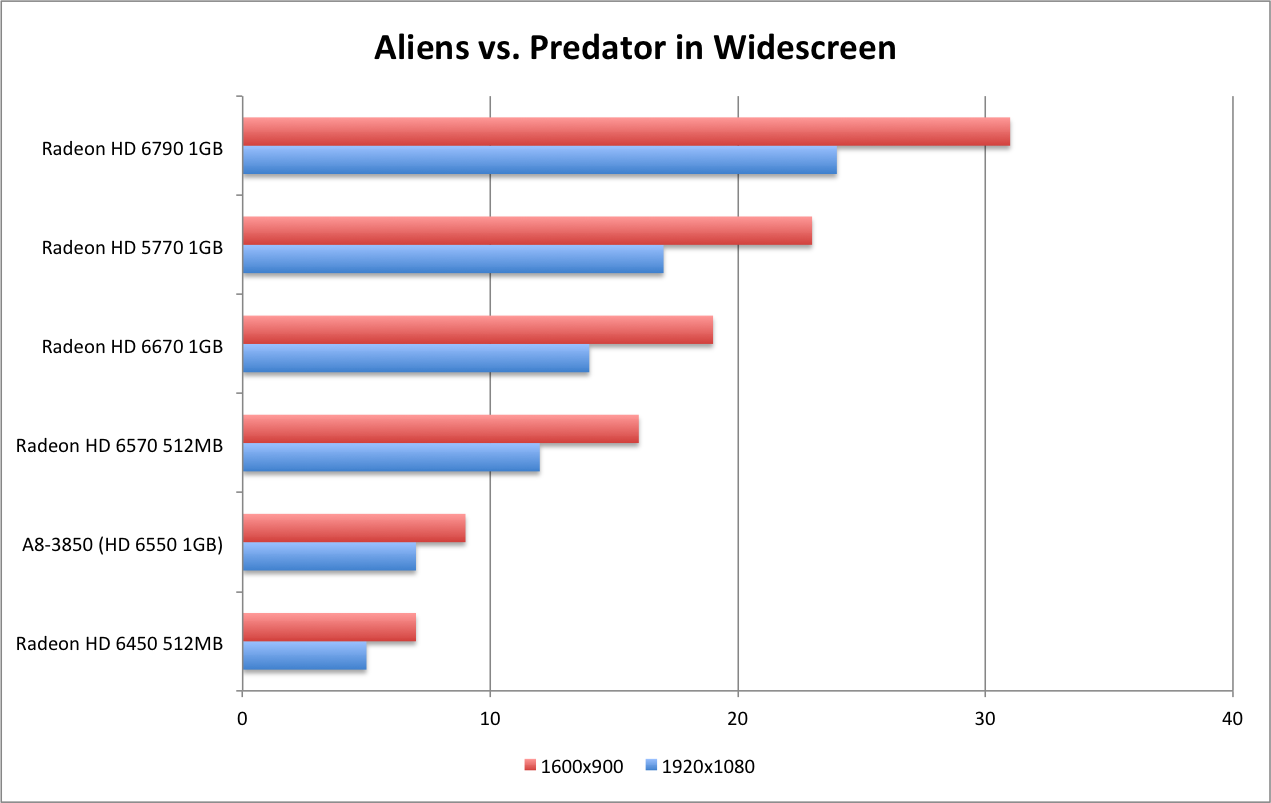
Battle Forge
Battle Forge is the free-to-play RTS from Electronic Arts. It offers a steampunk/fantasy RTS experience, where armies are build based on "decks" of cards similar to the Magic: The Gathering card game.
Battle Forge is one of AMD's spotlight (my terminology) games, as it offers both DX11 and proper Eyefinity support. The game offers a number of DX11 features, and a wealth of options for tuning performance. Specifically, Battle Forge uses DX11 and Shader Model 5.0 to compute HighDefinition Ambient Occlusion (HDAO). For our tests we maxed out all of the settings and forced DX11 through the config.xml file.
The APU doesn't come near to crossing 30fps at max settings, though cards above to pull significant gains. The real breakthrough appears to be at levels above the A8-3850.

DiRT 2
Dirt 2 is the second iteration of the Dirt rally racing series from Codemasters. Like Battle Forge, Dirt 2 is a spotlight game for AMD. Like Battle Forge it offers proper Hor+ gameplay in Eyefinity and DX11 support. Unless the user goes into the "hardware_settings_config.xml" file and forces DX9, Dirt 2 runs in DX11 mode. Unfortunately Dirt 2 does not offer a DX10 mode. This is unfortunate, as many games show improved performance when running in DX10 vs. DX9.
The true (noticeable) DX11 features come in to play based on the user settings in the in-game graphics options. Several key features are the "Hardware Tessellated Dynamic Water" (achieved through "Ultra" quality water), "Hardware Tessellated Dynamic Cloth" (achieved through "High" quality cloth), and DX11 Accelerated HDAO (through "High" quality HDAO).
The DX11 water and cloth offer more realistic geometry and movement. The DX11 water produces actual waves in deep puddles (as the player drives through), rather than simple "swirls" in the texture surface. The DX11 cloth offers more realistic ripples and waves in the cloth material over the DX9 version. On the other hand, the DX11 HD Ambient Occlusion (HDAO) offers an accelerated computation path.
DX11 doesn't necessarily provide earth-shaking changes to gameplay. But, it provides more realistic "movement" in the world's objects - cloth, water, grass, etc. While a DX9 or DX10 game is perfectly enjoyable, the DX11 technology offers better immersion by making the "little things" more lifelike. Additionally, it offers better computation paths through increased parallelism (and better computation paths for DX10), much like DX10 offered better performance (over DX9) in games such as Far Cry 2.
The A8 APU doesn't hit 30fps at max settings, but it could with the graphics quality turned down. Also, it could with the resolution in the 720p range.
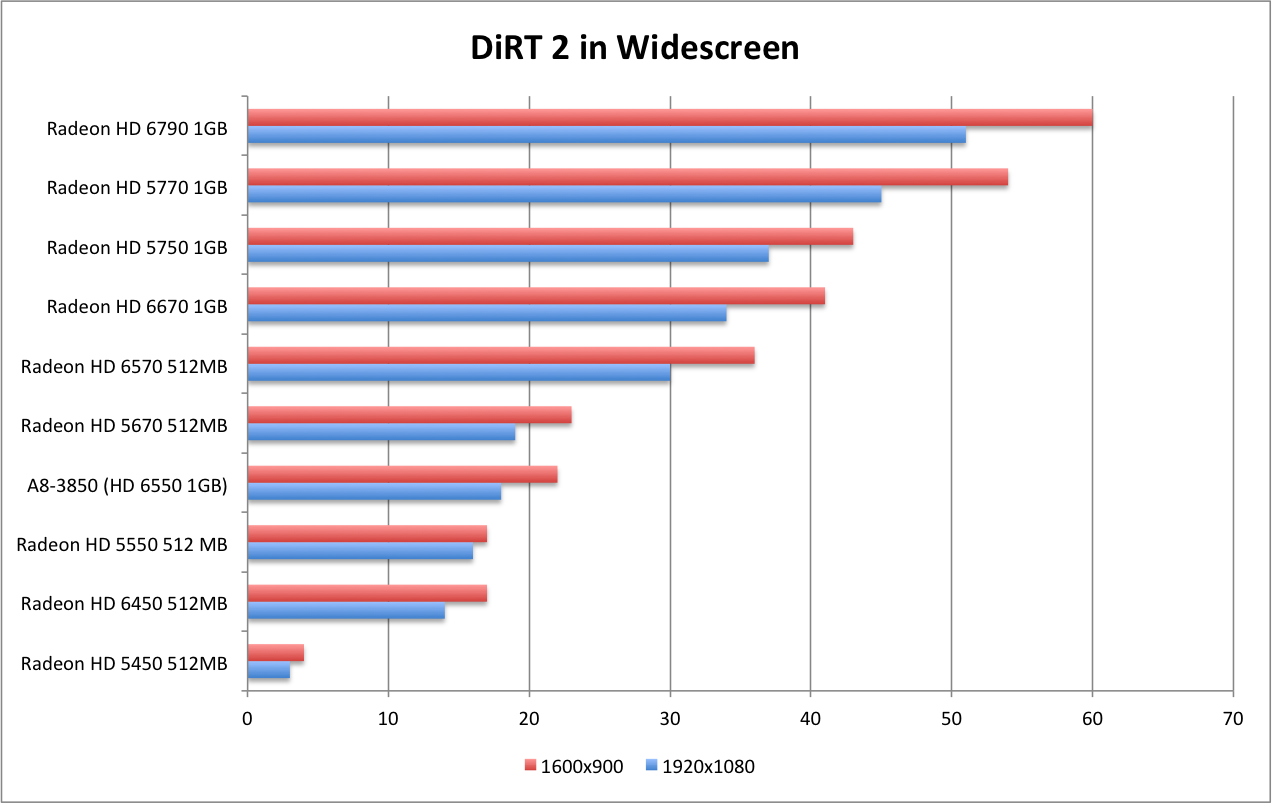
DiRT 3
The DiRT 3 benchmark ups the ante with better DX11 graphics and a more complex scene (including snow flurries). One thing to note is how comparable DiRT 2 and DiRT3 are, even considering the DX11 baseline of DiRT3 and the more complex benchmark course.
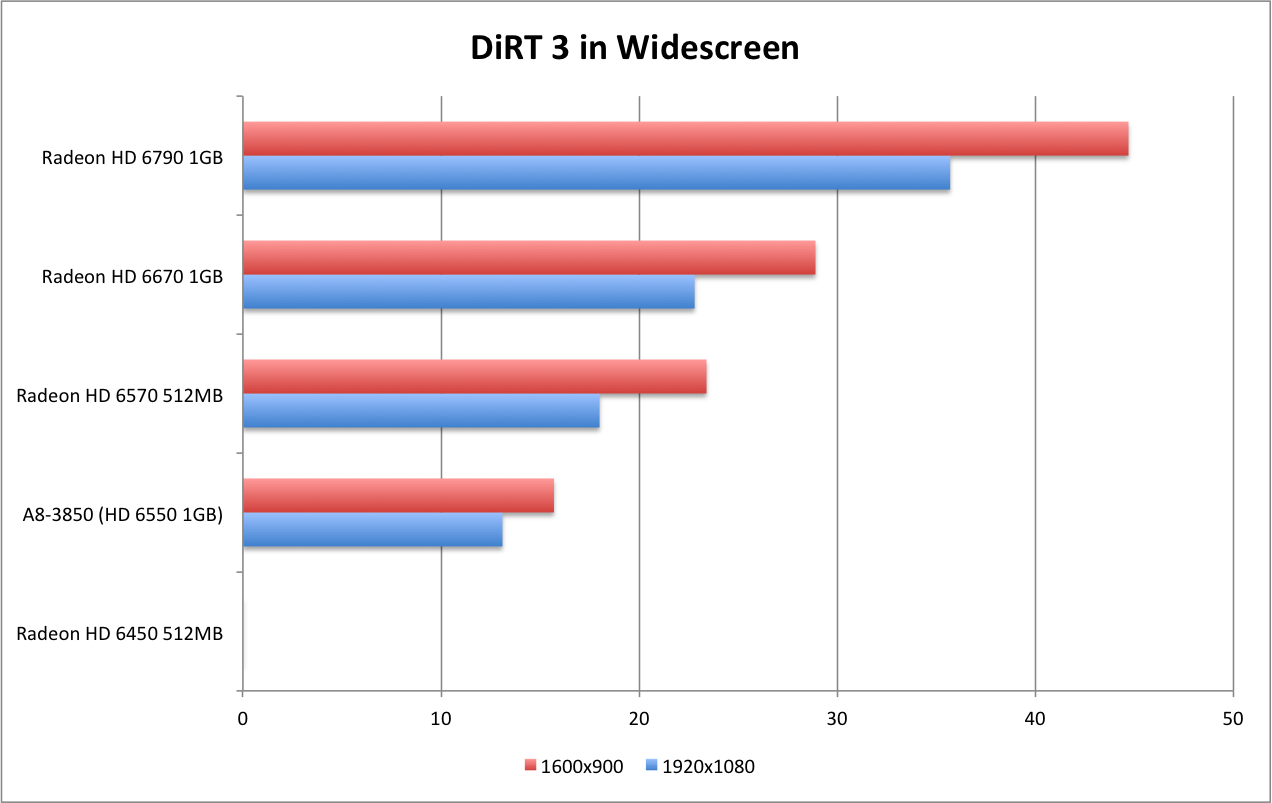
AMD Fusion A8-3850 Platform Review - F1 2010, Far Cry 2, H.A.W.X. & H.A.W.X 2
F1 2010
F1 (Formula 1) is a relatively new racing title from Codemasters. Like their previous title (DiRT 2), F1 makes extensive usage of DX11 technology with cloth, fluid dynamics and tessellation. The title is much more strenuous on both single screen and Eyefinity, compared to DiRT 2. The HD 6670 is the first card to provide acceptable frames. Additionally it's interesting to note that the F1 2010 engine tends to be less demanding than Dirt 2, even though the game was produced by the same company and was released later.
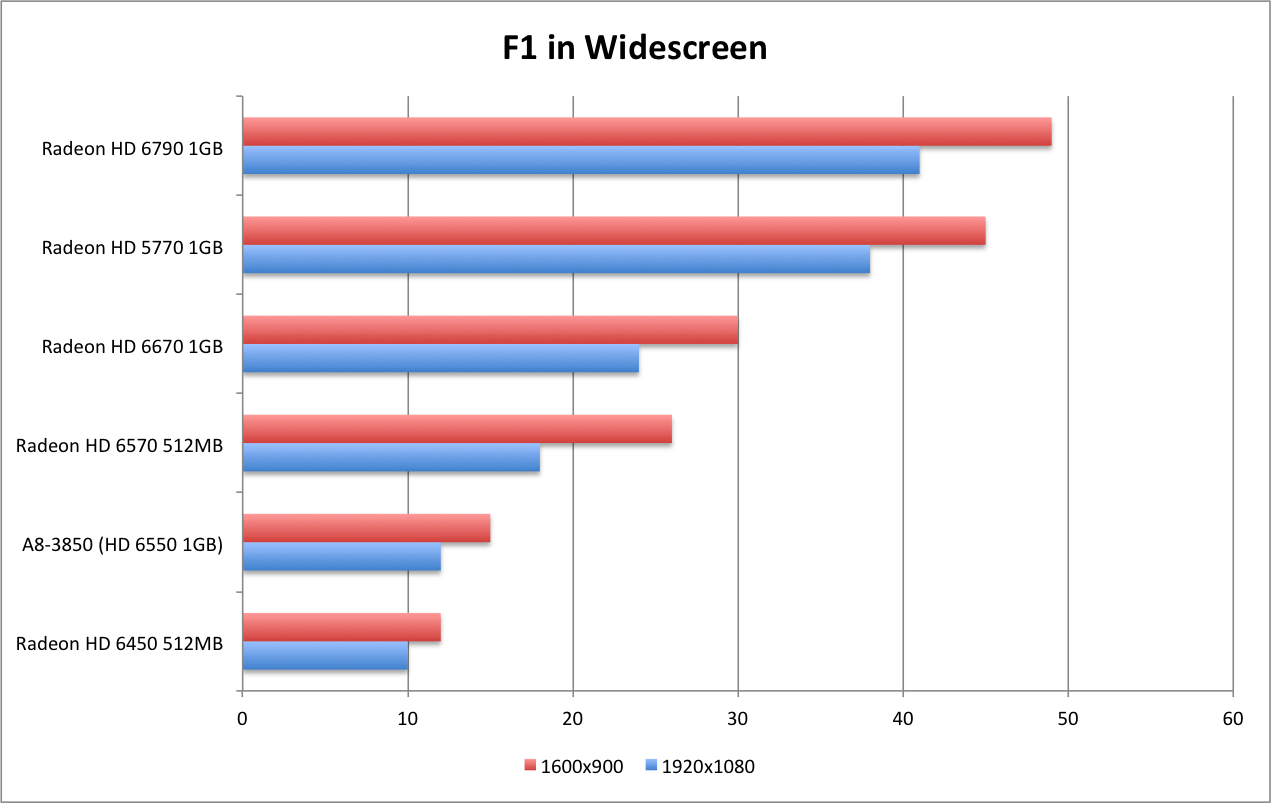
Far Cry 2
Far Cry 2 (and the whole Cry/Crysis series) has long been considered a system killer. If not a killer, then at least a good strong test. As always, we run our test at max settings with 4xAA. The benchmark tool within Far Cry 2 offers settings for High, Very High and Ultra. We chose Ultra with 4xAA.
While once a true system killer, Far Cry 2 shows that hardware catches up to software. The A8-3850 won't hit 30fps at max 1080p, but it will at lowered settings or resolutions.. All in all good performance for this class of cards.
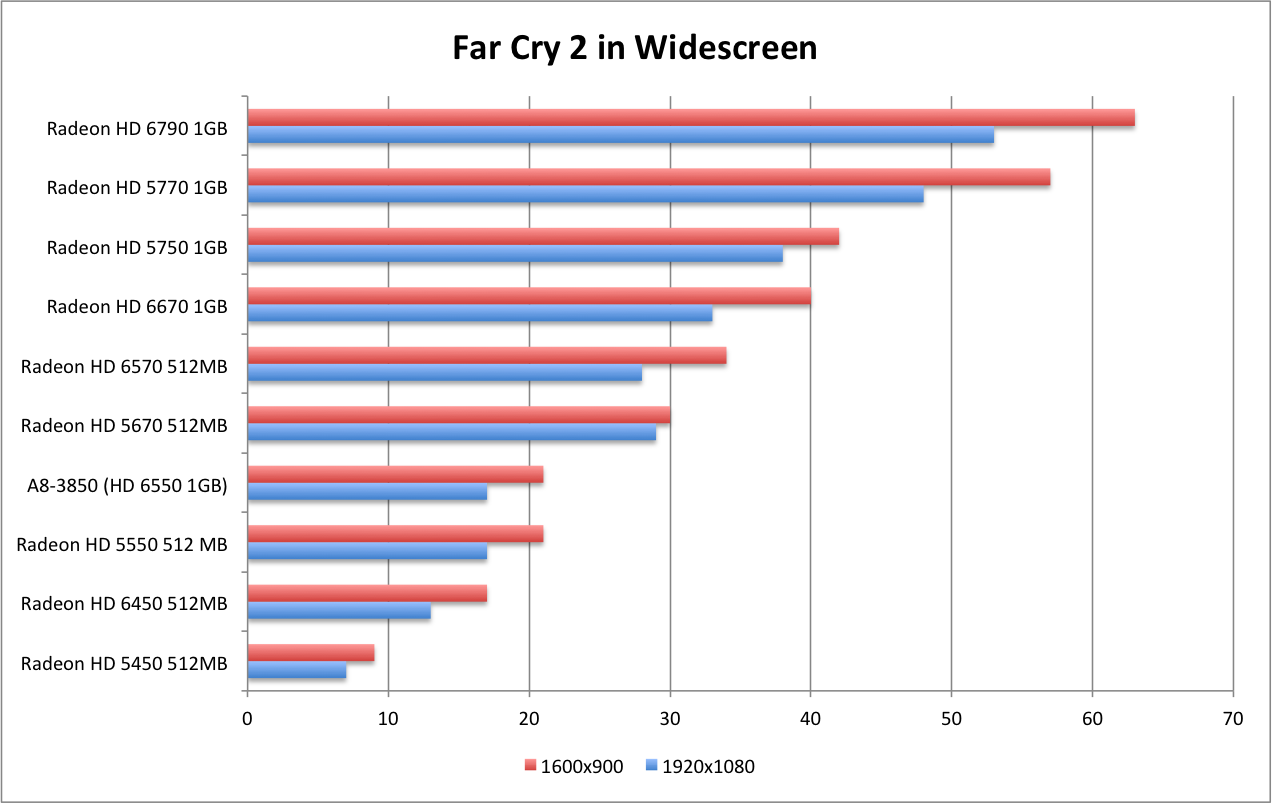
H.A.W.X.
H.A.W.X. is one last title that AMD has been showing off since the Radeon 5000 line launched. While the other titles are Hor+ and offer cutting-edge DX11 features, HAWX is quite the opposite. While it is a Hor+ title, it is only a DX10 title and runs quite well on a wide variety of hardware.
The well running and scalable title makes it a natural fit when showcasing both lower-end hardware pushing three panels, and high-end hardware pushing six panels. It also comes as no surprise that the additional VRAM largely goes unused, considering the title runs capably on lower hardware.
One note in the HAWX benchmark. Above 1920x1080 the game simply would not allow 4xAA. While the scores provide that the title could handle it, the option simply is not available. Though it isn't our norm, we chose to accept 2xAA so that we could get consistent readings across the spectrum of hardware.
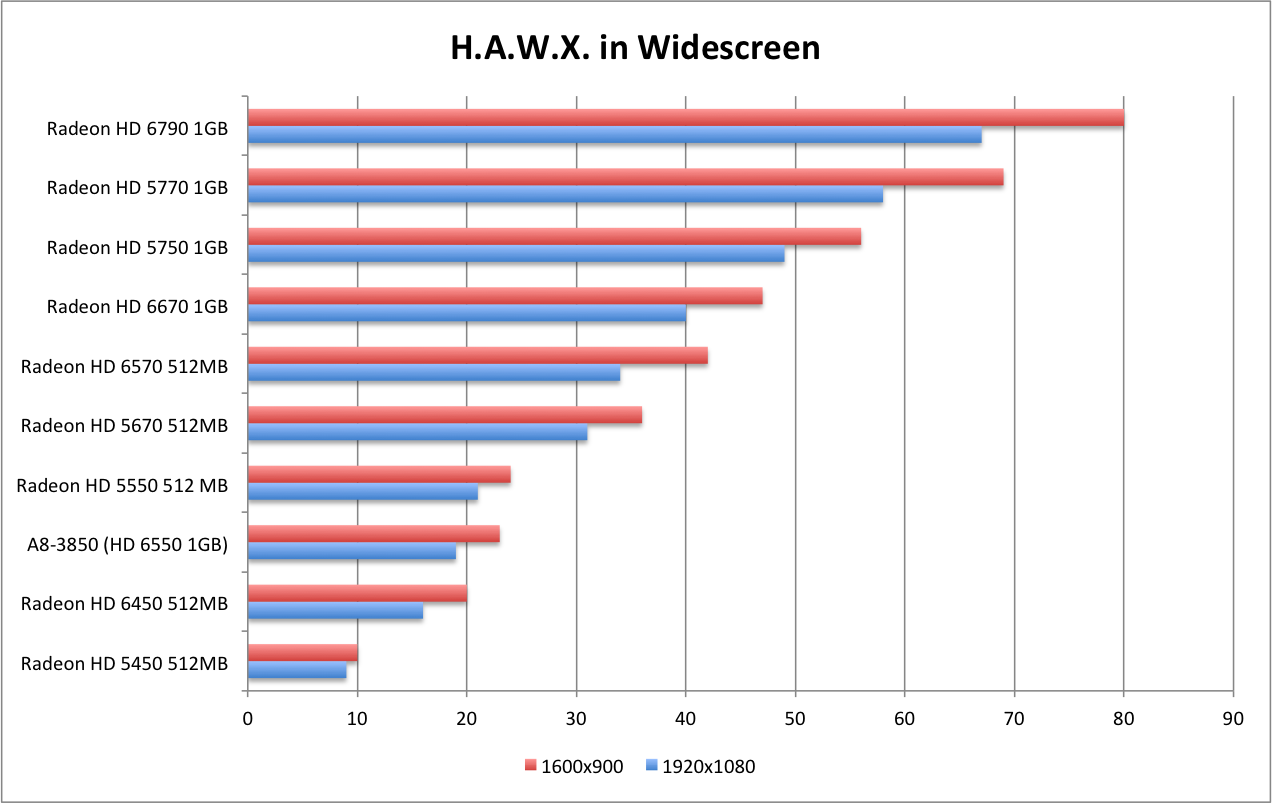
H.A.W.X. 2
The H.A.W.X. 2 demo provides a different experience, versus the original. If offers more mountains and tessellated geometry, and fewer cityscapes. The DX11 title offers a realistic view in the snow covered mountains, and is quite pretty to watch.
Though it's not the same benchmark, the A-3850 does provide a better fps in the DX11 HAWX 2 benchmark, than it does in the DX10.1 benchmark from the original HAWX.
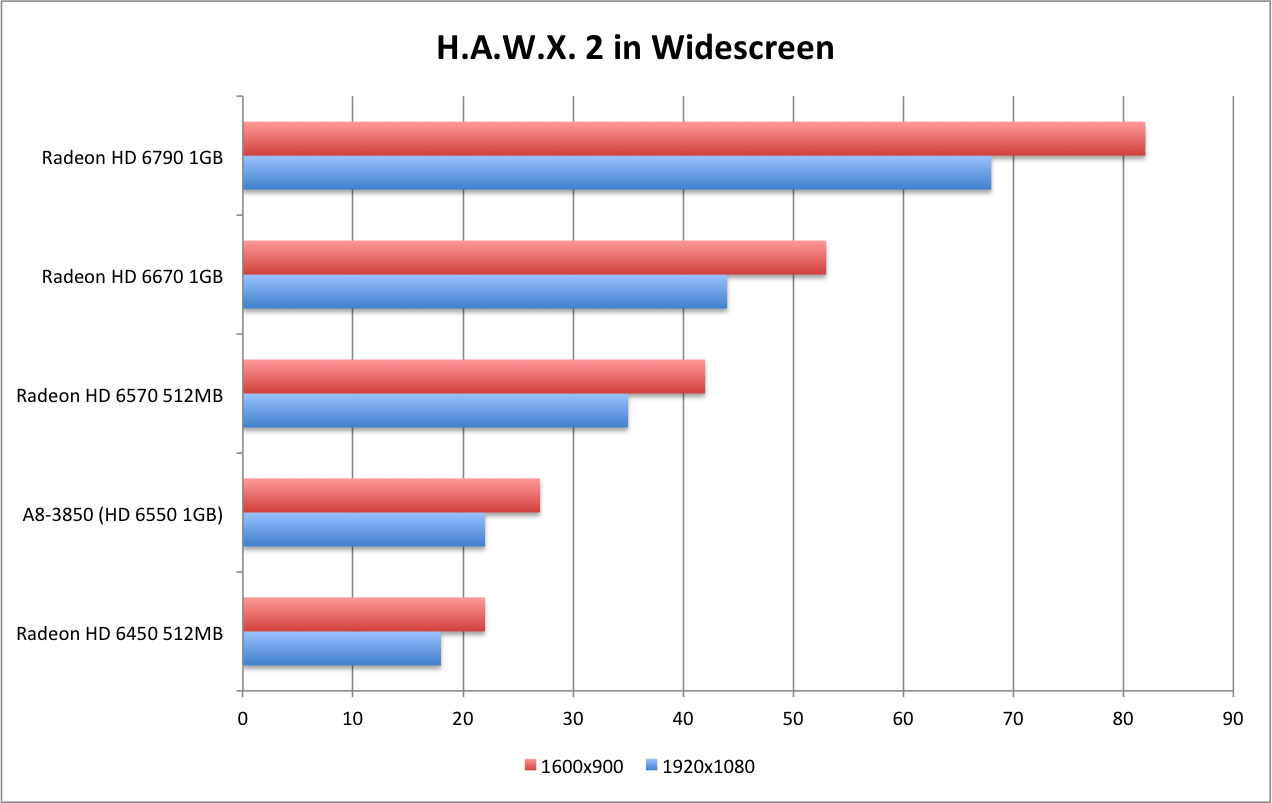
AMD Fusion A8-3850 Platform Review - Heaven Demo v2 (DX9, DX10 & DX11)
Heaven Demo v2
The Unigine Heaven Demo is unique in that it is the only demo which allows for the following components in one package.
- Synthetic Demo (i.e., a demo designed to "test" a system)
- Comparable tests of DX9, DX10 and DX11
- Is Hor+ (rather than limited to a few predefined aspect ratios)
The ability to compare DX9, DX10 and DX11 in the same environment allows for the unique ability to see how the different cards perform across these different comparable environments. Tessellation was set at Normal Mode.
The updated 2nd version of the Heaven demo offers more segments and more options. As we've seen in the past, the Mainstream cards aren't designed to handle the Heaven demo at full-bore. All in all, the 6550D on the A8 APU falls in line where you would expect.
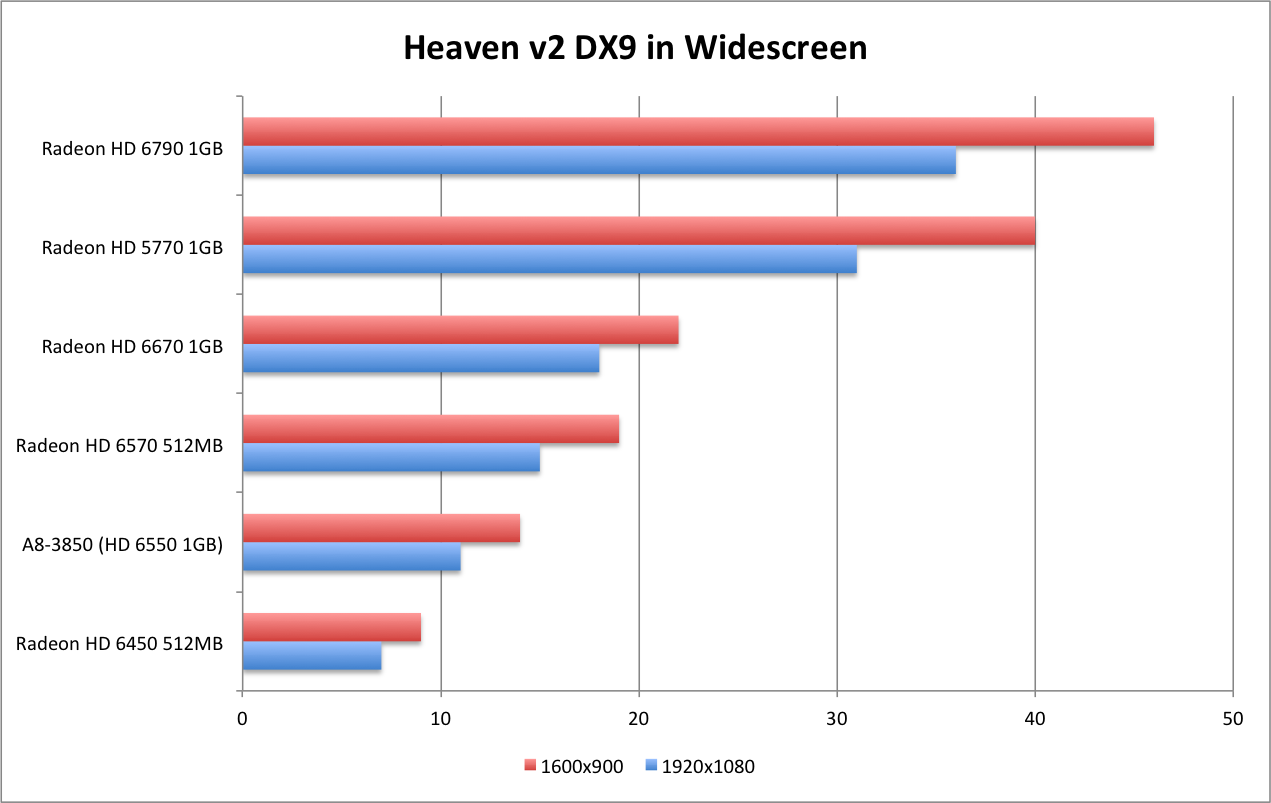
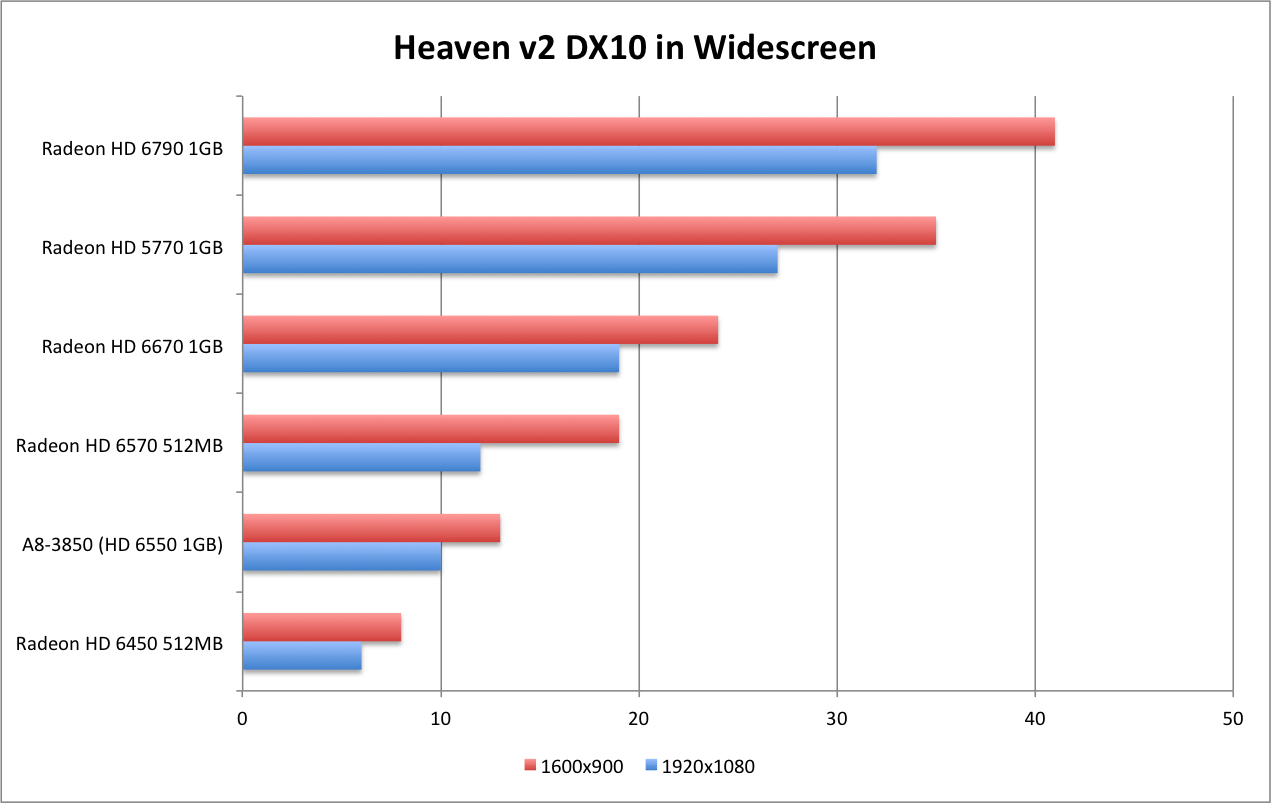

AMD Fusion A8-3850 Platform Review - Just Cause 2, Mafia II, Metro 2033 & Shogun 2
Just Cause 2
Just Cause 2 is the wildly popular sequal to the wildly popular Just Cause. You take control of protagonist Rico Rodriquez and rain down over the top destruction across a small desert island. The game is a free roaming title that offers literally limitless options to wreck havoc with your "hook shot" grappling device.
While the benchmark tool in the demo doesn't offer anything in the way of explosions or destruction, it does offer some beautiful scenery that is still quite demanding on multi-monitor environments. The A8 gets close to playable at max settings, but does fall short.
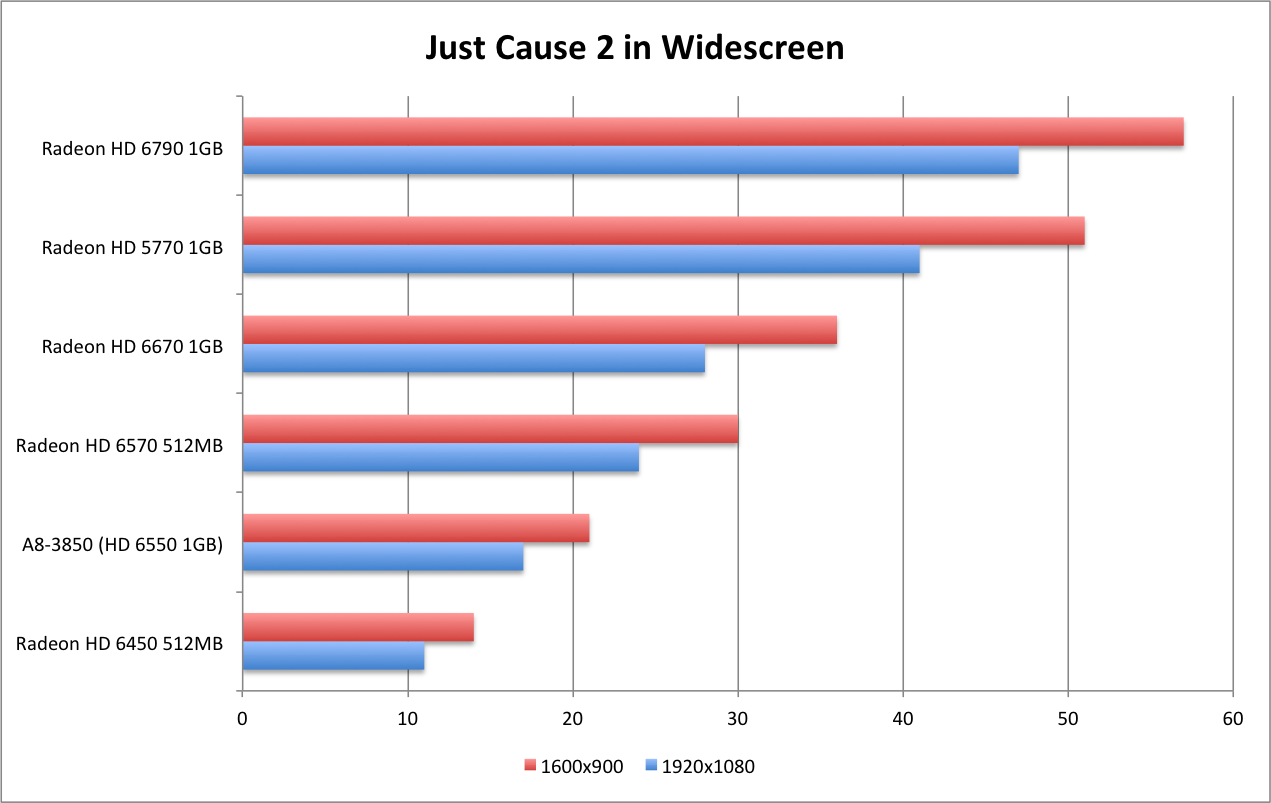
Mafia II
Mafia II is an open world "crime" title from 2K Games. It is the second game in the Mafia series. The demo comes with a built-in benchmark tool that offers both indoor and outdoor environments, various lighting effects and fire. Mafia II is quite demanding and none of the Mainstream cards approach 30fps.
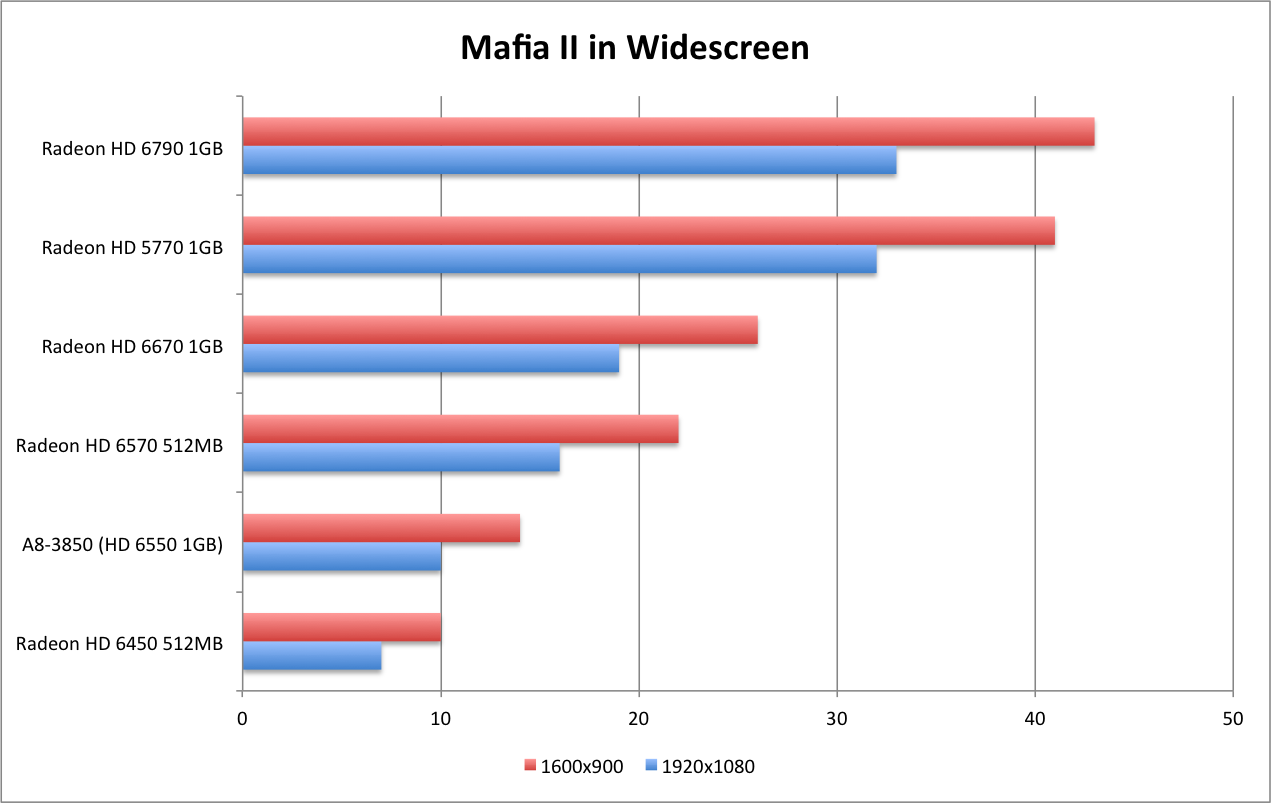
Metro 2033
Metro 2033 is a nice canned demo with some detailed geometry and eye candy. It pushes even modern cards to their limit.
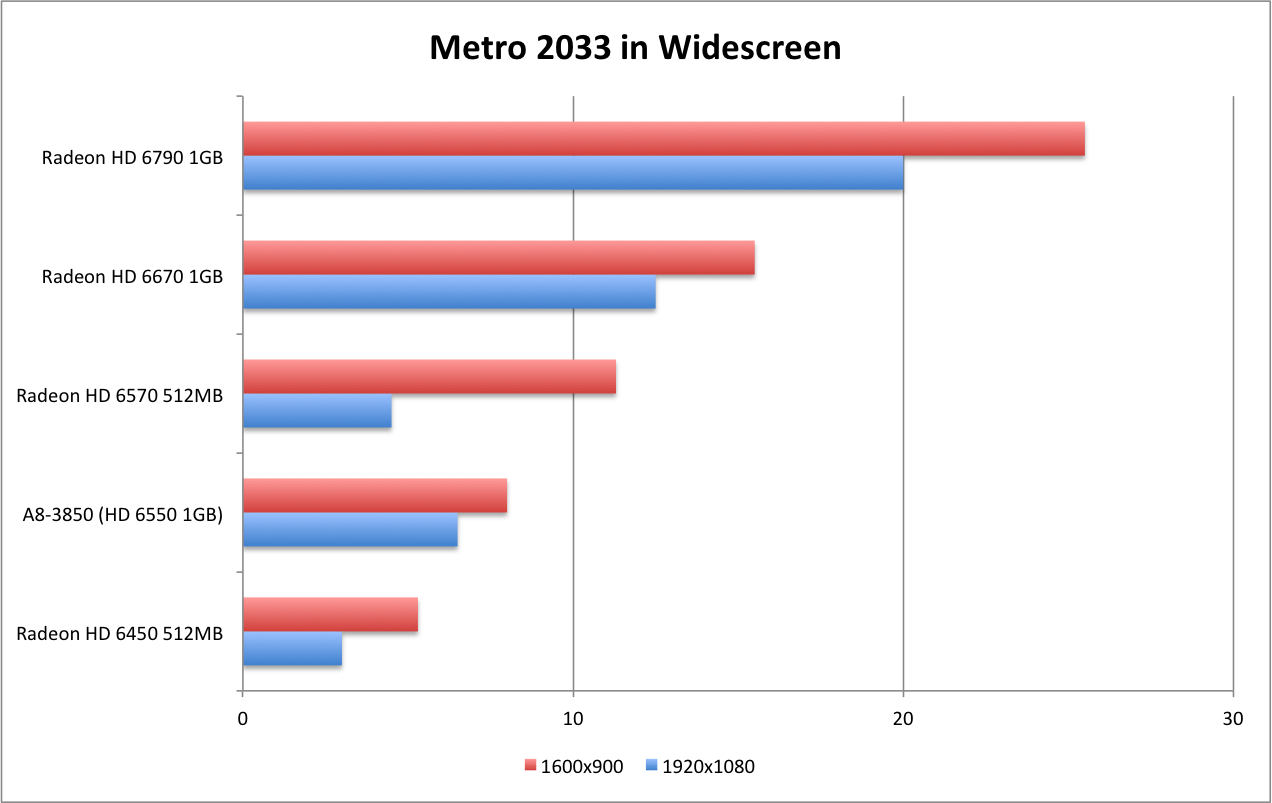
Total War: Shogun 2
While most of our benchmarks are done at completely "max settings", that wasn't possible with Shogun 2. I am testing at "Very High" settings, with 2xAA and the DX11 options (Soft Shadows, SSAO, etc.) turned on. I couldn't up the basic graphics settings beyond Very High, or attempt to use 4xAA. If I tried, the benchmark would fail to run at 1600x900 or 1080p on a 1GB card. Even at these settings, the benchmark fails to run on a 512MB card. This is our first benchmark that requires a 1GB card for a single widescreen.
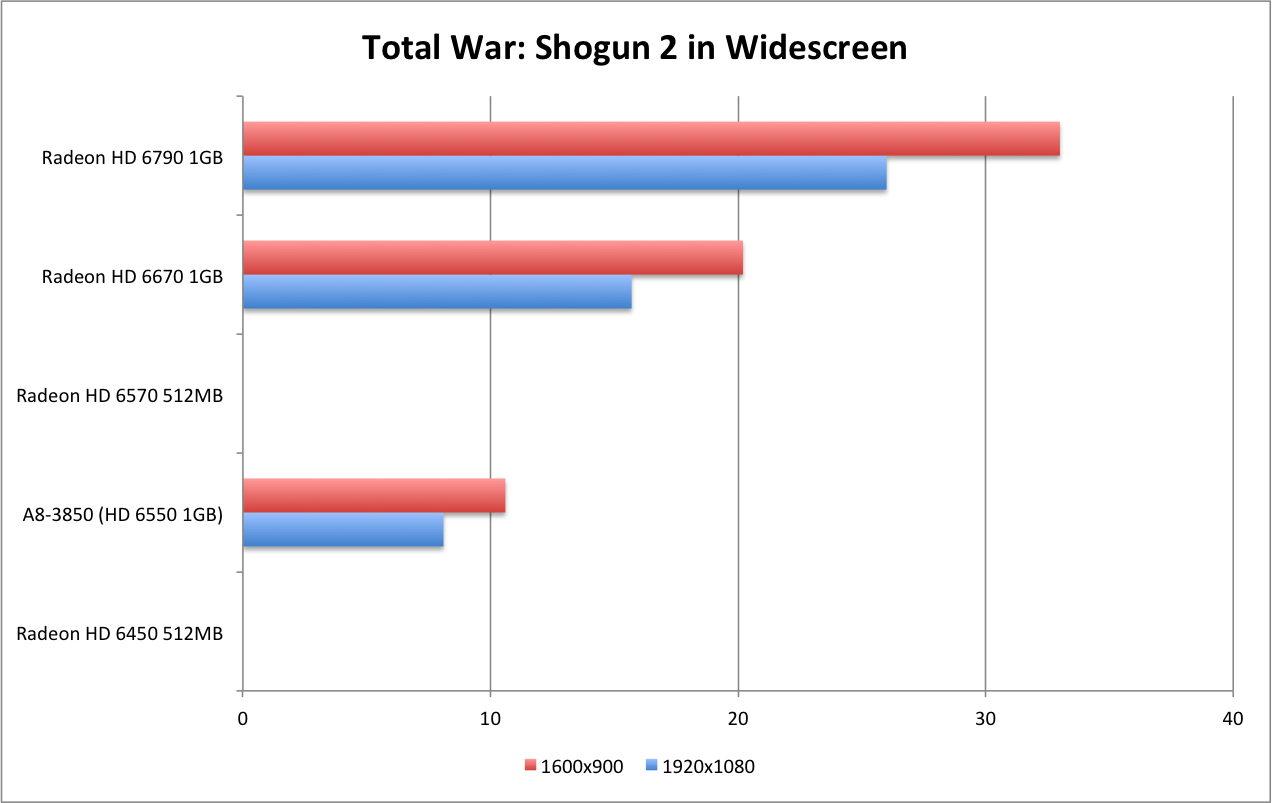
AMD Fusion A8-3850 Platform Review - S.T.A.L.K.E.R.: COP & Warhammer 40k: Dawn of War II
S.T.A.L.K.E.R.: Call of Pripyat
Prior to the game's release, the developer put out a benchmarking tool to test your system configuration. It offers a number of different options for utilizing DX9, 10 or 11 code paths. It also offers options for varying levels of HDAO and Shadow Quality. The demo itself isn't very pretty to look at (lots of dirt and dirt-colors), but it does put a beating on your system.
While none of these cards provides playable frame rates, we can see the improvements over the previous generation. The A8-3850 performs admirably well (assuming you have the right expectations to start with), and fits right where we would expect it to.
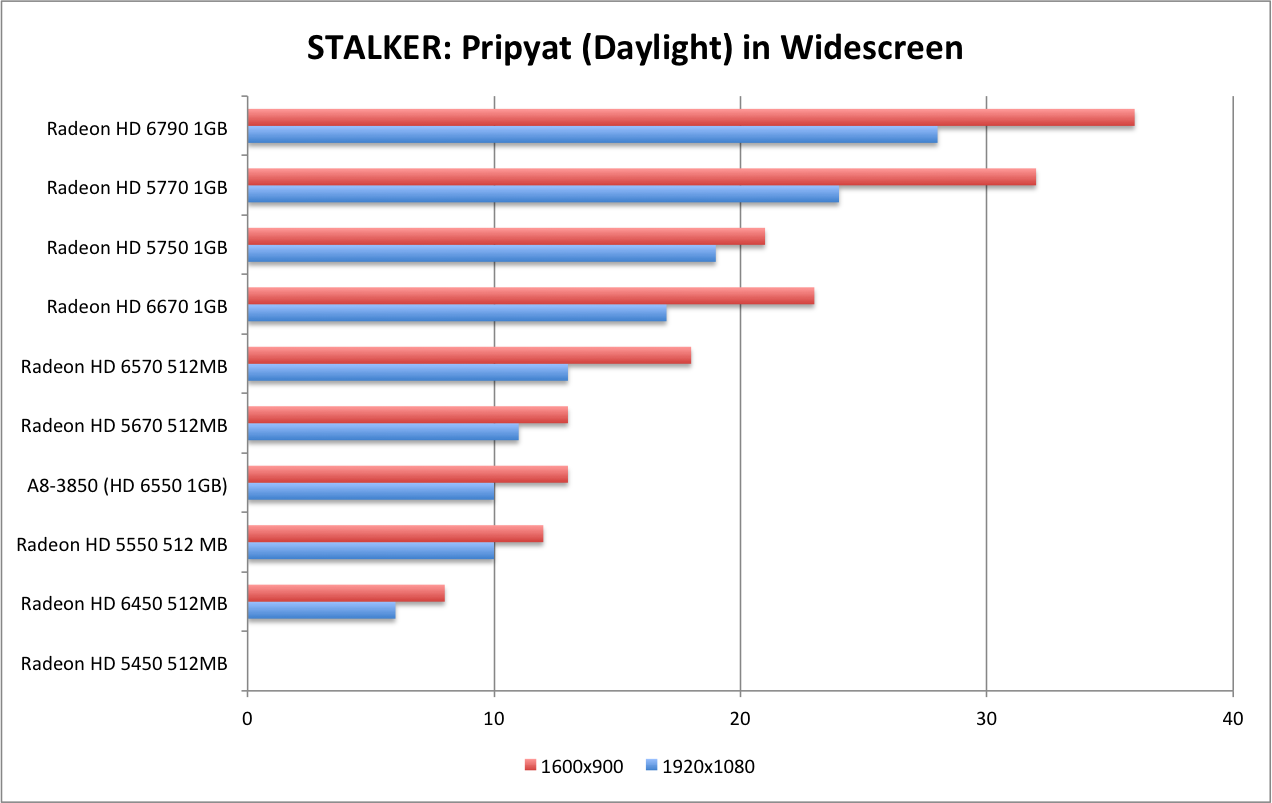
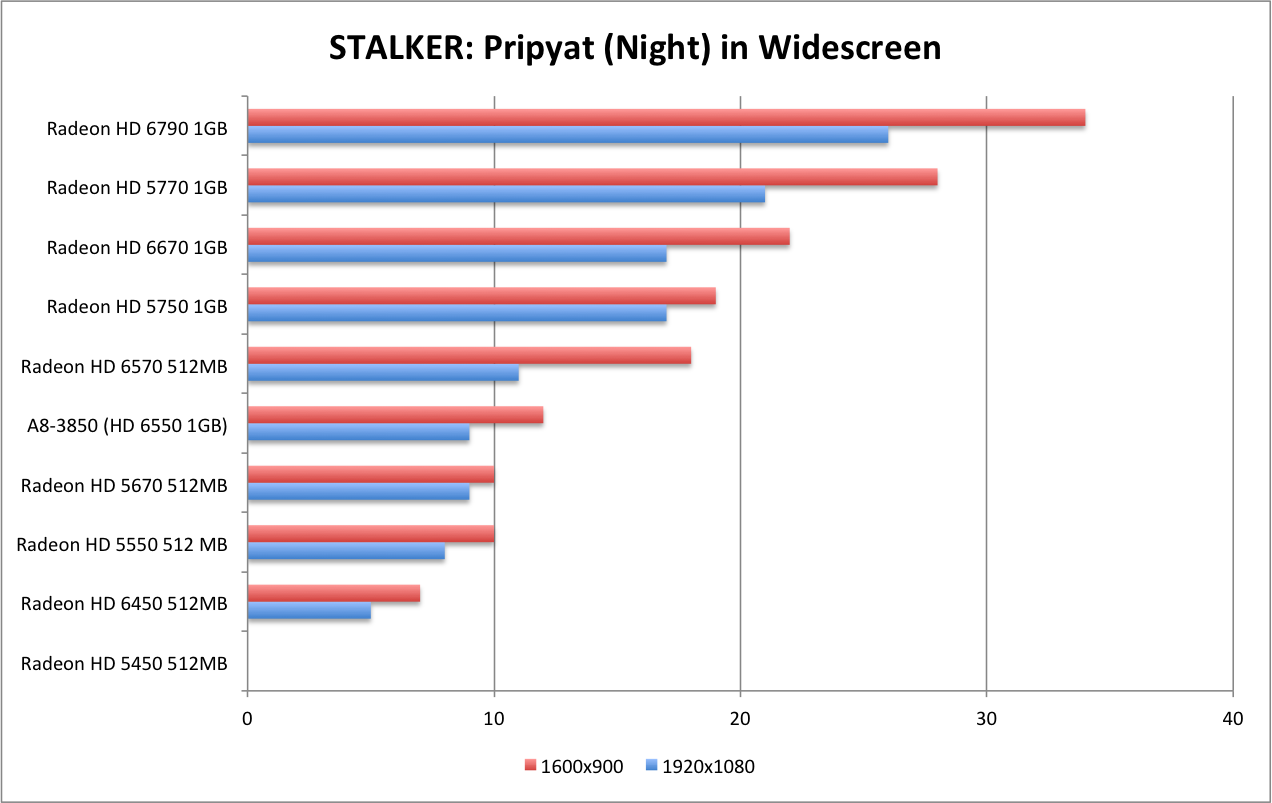
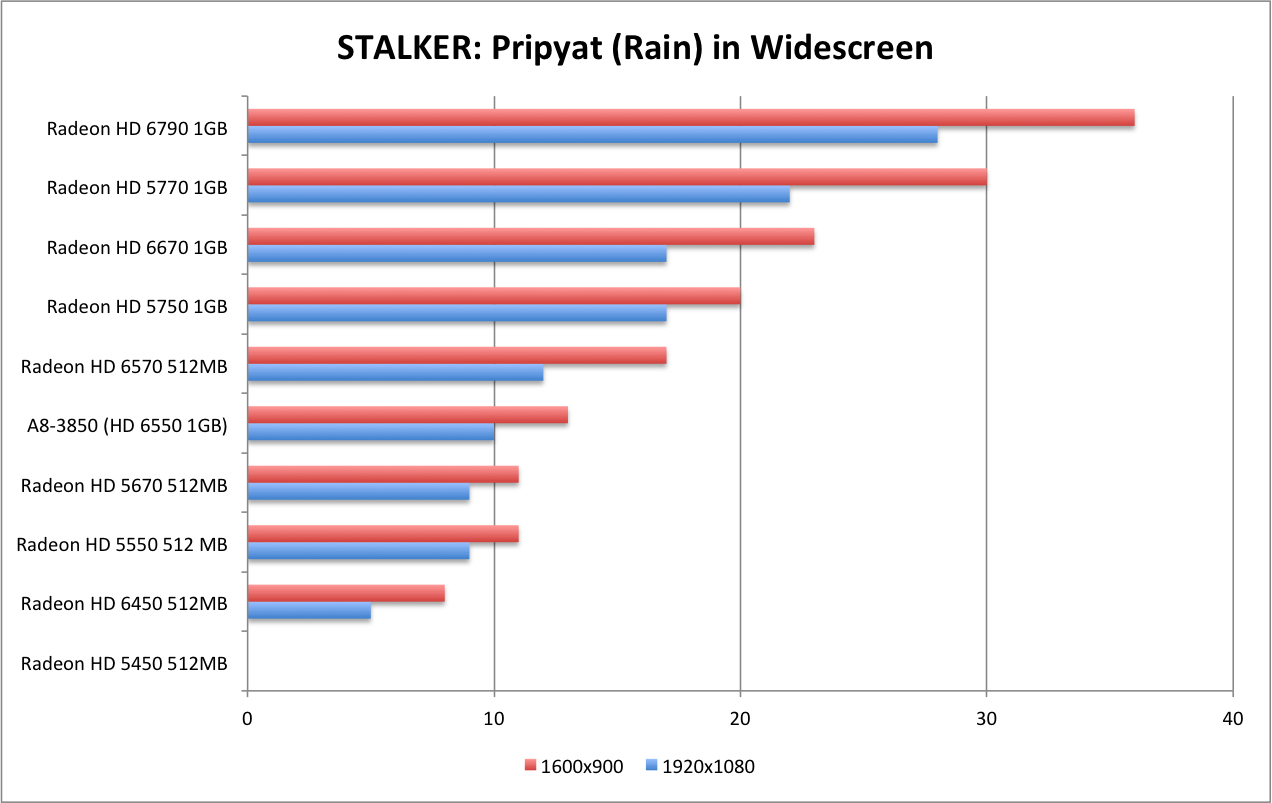
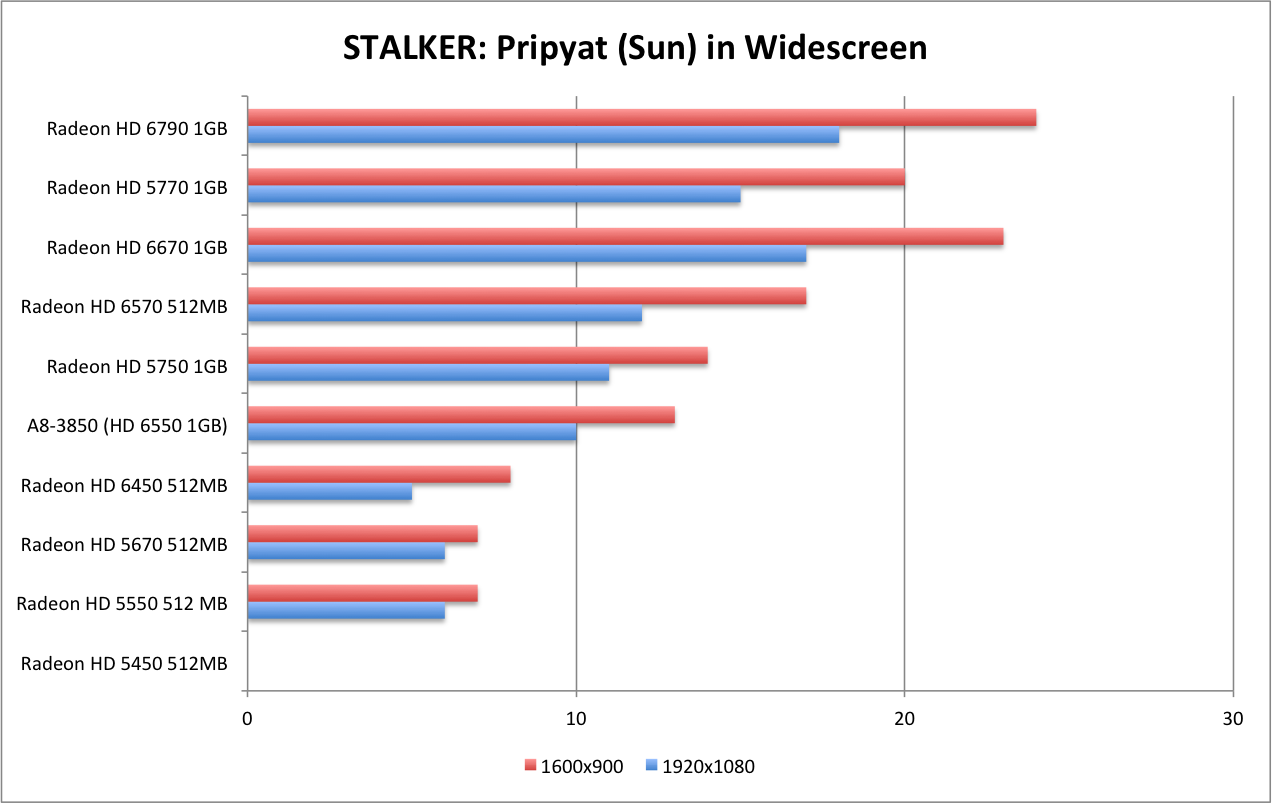
Warhammer 40k: Dawn of War II
I've added the Warhammer 40k: Dawn of War II benchmark to the current test bench. I wanted to add a more popular RTS than Battle Forge, and this title seems to fit the bill. Unfortunately the A8-3850 won't run the benchmark at max settings. Something on the APU (doubt it's CPU, but not sure why the 1GB GPU has issues either) won't run the test with module quality on high. Thus, there are no scores to report here.
